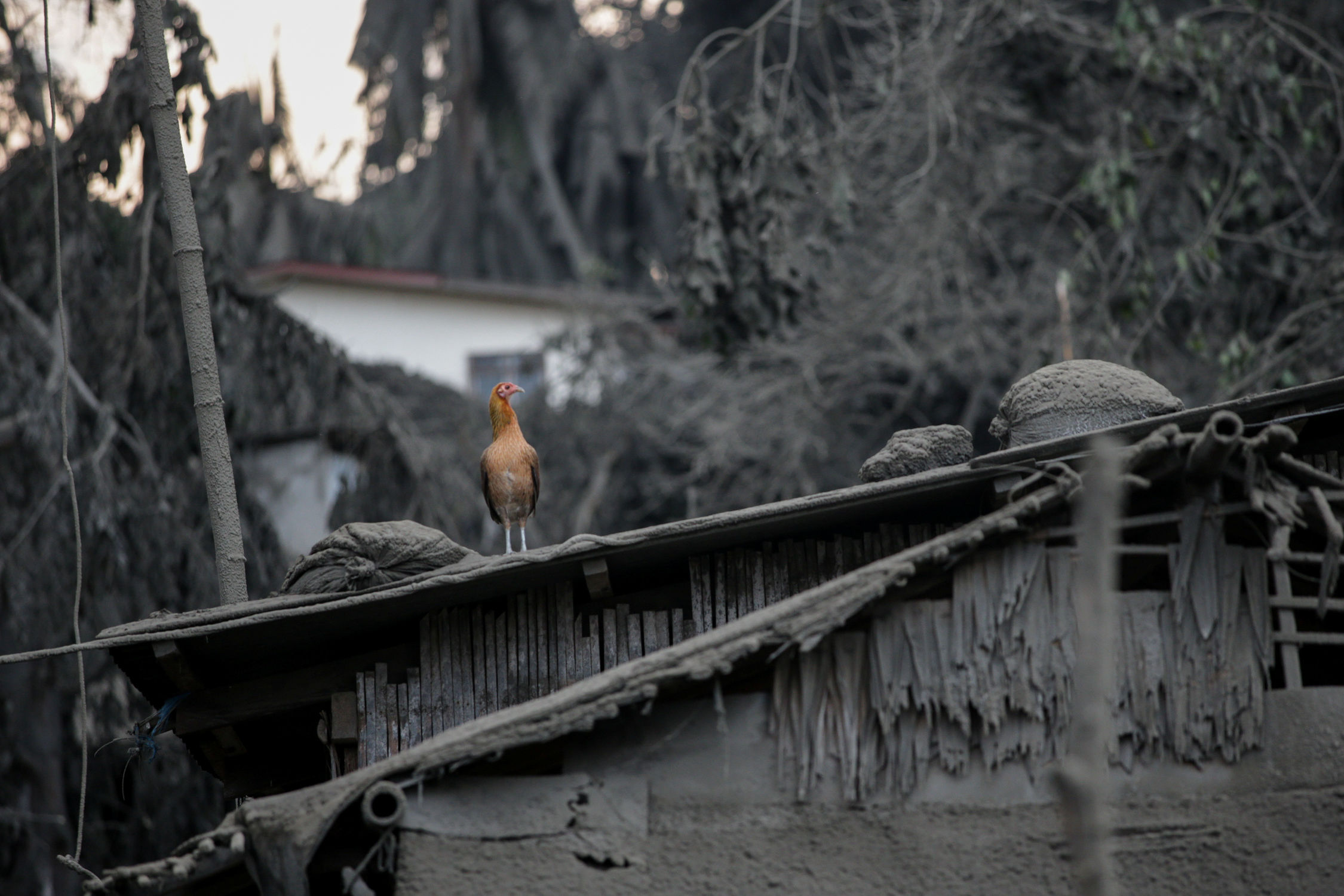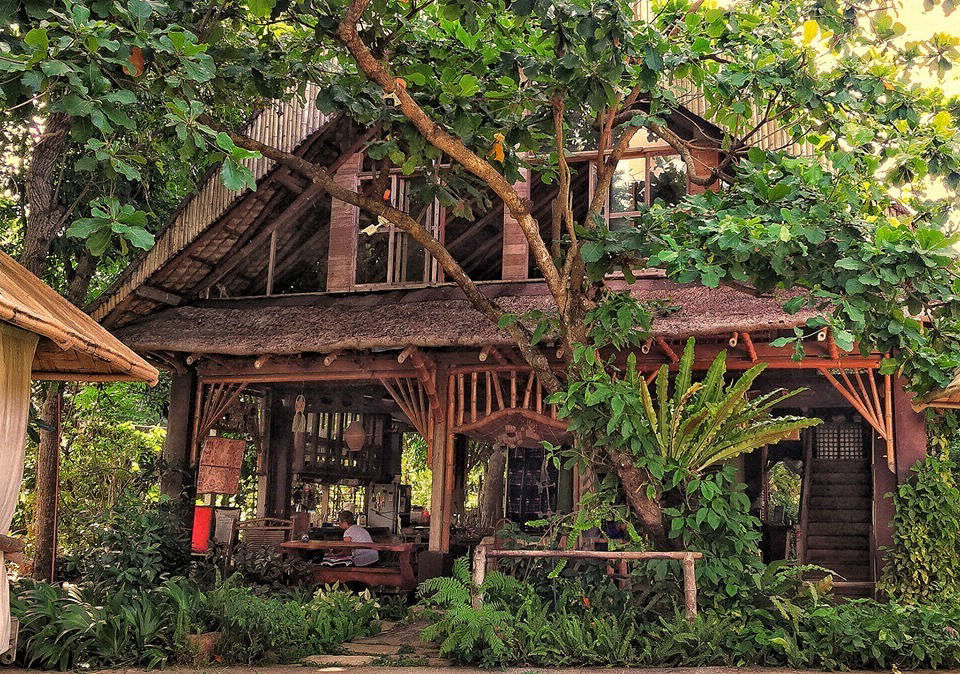By HOWIE SEVERINO
January 13, 2020
The erupting Taal Volcano is seen from Tagaytay City. REUTERS/Eloisa Lopez
As Batangas residents flee Taal Volcano’s ash and fire, I also think about people like my parents-in-law who once took refuge there to save their lives. Even during the bloodiest period of World War II, Volcano Island in Taal Lake was the one place in the war-torn province that was considered safe from the Japanese, who apparently did not see a need to occupy a place that constantly faced apocalyptic danger.
As young war refugees, my future mother-in-law and future father-in-law – who didn’t know each other then – survived and have lived long, fruitful lives. They were, of course, lucky that the volcano did not erupt during those years, when they subsisted on root crops and whatever else grew on its fertile slopes, and on the abundant catch from the lake. To them, as with many others in Batangas, hyperactive Taal Volcano is more than a disaster waiting to happen. It’s also, ironically, a life-giving sanctuary.
Throughout its eventful natural and human history, Taal Volcano has alternated between decades of tranquil nourishment of thriving lakeshore communities and sudden cataclysms that kill scores of people and even rearrange the land. The most powerful eruption in its recorded history, the 1754 eruption that lasted more than six months, forced the relocation of three towns.

A beautiful sunset in 2018 in Taal Lake, which was formed after an upheaval following the 1754 eruption of the volcano, turning a saltwater bay into a body of freshwater. HOWIE SEVERINO

A view of Volcano Island (left) from the author's home beside Taal Lake. ALON SEVERINO
That eruption also created the lake. The water around Volcano Island, with its numerous craters, some not even known to scientists to this day, used to be part of the sea since time immemorial. The continuous upheaval that comprised the 1754 eruption, with earthquakes, massive ashfalls and flying boulders, gradually converted what had been a saltwater bay into a freshwater ecosystem, with a narrow outlet to the sea known today as the Pansipit River.
Marine species in the bay got trapped in the new lake, evolving into endemic freshwater variations that have made Taal Lake a biodiversity marvel. It’s the only place on the planet with freshwater sardines (tawilis) and freshwater jacks (maliputo), which are considered regional delicacies.
The abundance in the lake, the access it gave to various parts of southern Tagalog, its proximity to the sea, and the rich volcanic soil made the Taal Lake basin the traditional heartland of the Tagalog people. It was a literate society even before Europeans first arrived, with both native men and women reading and writing in their own ancient script, Baybayin.
In the 19th century, coffee grown on the slopes around the lake made Batangas wealthy and even a global economic player. Batangueños helped finance the Katipunan. In the early 20th century, T.M. Kalaw called Lipa the Athens of the Philippines, a proud center of culture and learning.

In Talisay, Batangas, a bird sits atop a roof covered with ashes from the erupting Taal Volcano. REUTERS/Eloisa Lopez
The lake and its environs are also among the most picturesque places in the country, a prime tourist attraction and wedding destination that’s an easy day trip from Metro Manila. The breathtaking view’s postcard caption, “an island within a lake within an island within a lake within an island,” describes one of the world’s natural wonders.
All of that glorious uniqueness however was made possible by a history of violent upheaval, such as the eruption that began last Sunday, January 12, and could continue for days, weeks, or maybe months, creating havoc in the regional economy and even aviation.
Thousands on Volcano Island, with its famous and secret craters, have been evacuated, leaving over a hundred horses behind, the ones who have carried tourists up the slopes to gaze wide-eyed at the crater of a live volcano. The ash has already killed crops and trees, created a run on face masks, and fallen as far as Bulacan. We’ve probably not seen the worst. This eruption may yet alter the landscape radically before it’s done, like what the 1754 cataclysm and others before and after have done.
It may also eventually destroy my property on the eastern lakeshore, a bamboo house surrounded by native trees, one of which hosts a treehouse which my family and friends have enjoyed for seven years. My parents-in-law love visiting this place, where they can clearly see Volcano Island, their sanctuary from wartime danger many decades ago. Today, the island is shrouded in billowing smoke, the Tagaytay ridge above it no longer visible.

The author, with his pet Dogster, at his home in Taal Lake, during less eruptive times.

The author's home beside Taal Lake is made mostly of bamboo and other upcycled wood from demolished homes. JUNNIEL AQUINO NICOLAS
My wife, a native Batangueña, and I bought this small piece of land a decade ago with our eyes open to the risks. Since then, we have brought the people who mean the most to us here again and again, to savor the endemic tawilis, kayak to the volcano’s shadow, and stare at the lake’s incomparable sunsets.
There is a cornucopia of reasons that draw people to live here. After each disaster, many flee, some never to live here again. But others always take their place, accepting the dangers with the blessings. My wife, son, and I may soon lose everything. But that only means that at one stage in our lives, we had everything. This volcano, always alive and ready to blow, makes a pact with everyone who chooses to live near it: whatever it gives can be taken away at any time.
In-depth special reports and features showcasing the best multimedia storytelling from GMA Integrated News.
SHARE THIS STORY